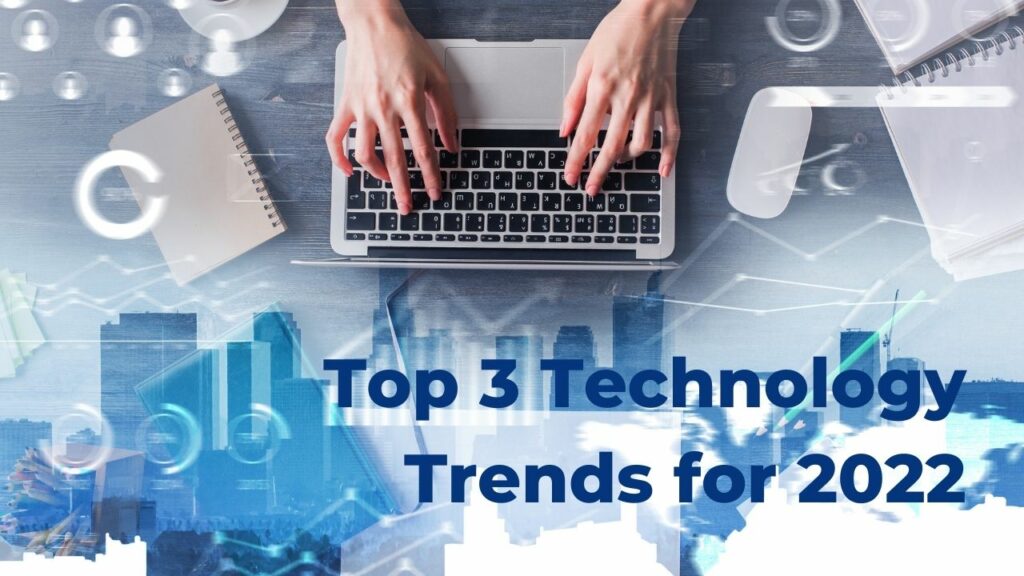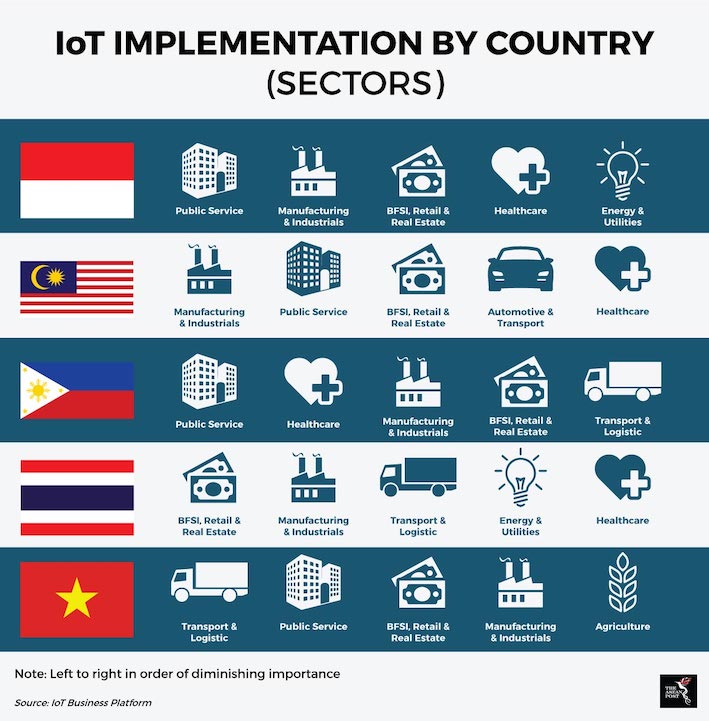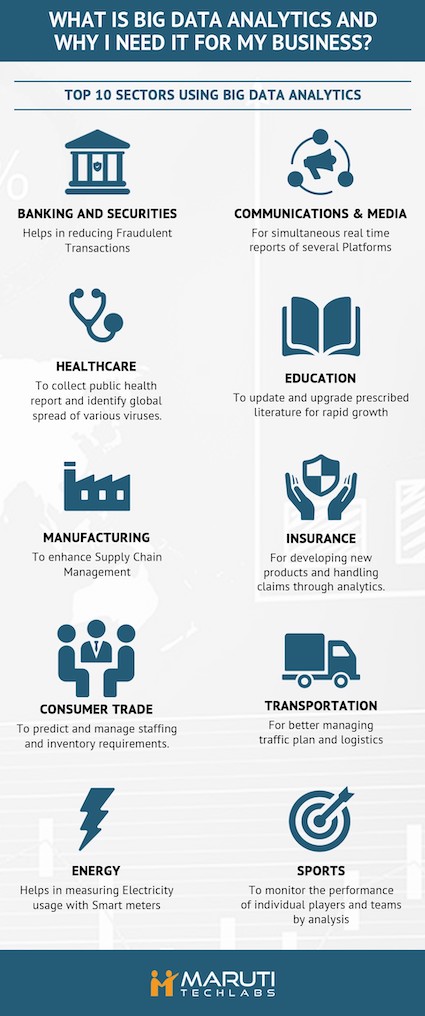Top 3 Technology
Trends for 2022
- Published: 14 Feb 2022
- By: Ts. Saiful Bakhtiar Osman
- Category: When Experts Meet Experts (WEME)

What is your technology focus for this year? How about the overall technology trends for 2022? I am sure every CIOs and Heads of IT had already planned some projects in the pipeline, during the business plan session last year. How about the technology predictions for 2022, did it help in any way in coming out with that decision?
If you happened to ask me this question last year, I would still give the same answer even today. I personally believe that 3 technology areas will continue to give a big impact on businesses, namely, Cloud, IoT and Analytics.
1. Cloud Adoption
Cloud has helped to turn around many businesses that were badly impacted during the pandemic. The service delivery was at risk, with staff forced to work away from the office. The services rendered were not reachable, as the consumers were bound to stay indoor for safety. However, Cloud adoption has managed to bridge this gap and allow the services to reach even a bigger population of customers.
Having already implemented the Cloud services for 2 companies, for the last 7 years, I would like to share with the audience the bold and calculated move that we took. However, I shall not touch on the risk factor or why most companies are still reluctant to take the leap, as they surely have got their own reason and justifications.
Here are among the considerations taken when we made the first move:
-
Fast to market
When I was recruited to set up the Economic Regulator for Aviation Industry’s office back in 2015, we needed to start fast and catch up with all the established agencies out there. Hence, we had leveraged a Software-as-a-Service (SaaS) cloud CRM tool from Salesforce.com. Since the workflow and the logics were already built in, it took us only some customisation and tweaks to fit our needs. As a result, by adopting the Cloud, we were able to deliver a fast and reliable system to the public, which was the Complaint Management System. The same success was repeated when we came out with AeroFile, the flight landing application system which removed the manual documentation and reduced the approval turnaround time from 30 days to only 3 – 7 days!
Adopting Cloud would allow your company to leverage the existing features available in the Cloud offering to quickly release your product into the market. If you have a standard CRM requirement, accounting or even Human Resources requirement, I am sure that you would be able to benefit from a mature template that has been used by other companies globally, as opposed to trying to develop everything from scratch. You may refer to Eugene Chung’s article if you would like to know more about the type of Cloud services and the ‘as-a-service’ offering differences.
-
Fast deployment of new offices
In the current business ecosystem, we need to quickly react to the market and grab any opportunity that presents itself. By leveraging the Cloud infrastructure, you would have the flexibility of setting up your businesses in any country in a very fast manner. In our case, The ASCENT Group Ltd, we could set up new offices across the Asia Pacific and meet the demands from our customers and premium partners, in a fast manner because we are currently running 100% on Azure Cloud. While waiting for the hiring of Staff in that country, the MD or Country Director can already kickstart the business and meet the demands, as he or she is well supported by other existing offices within the Group.
By going to Cloud, you would be able to leverage the global footprints of the Cloud service providers, which already have a presence in a lot of countries around the world. If you are going to open the business traditionally with the IT setups as well, you would need to consider the local technology supports, the manpower to be on board to run the office and investing in the infrastructures i.e.: servers, switches, firewall, storage and relevant IT security devices. After all these considerations, would it still be feasible to open an office in that country?
-
Reliability, Accessibility and Availability
It is the goal for businesses to provide services that are reliable, accessible, with high availability to their customers. By going to Cloud, you would be able to leverage the robust infrastructure and the multi-mirrored Cloud to make sure that your system has the highest availability (uptime), reliability and accessibility from anywhere. Your website, for example, is the representation of your brand, what would be the perception should your website always down and not available?
At least, you would have a piece of mind with the redundancies being set up in the Cloud. If you take Azure Cloud for instance, in Singapore alone, there are 3 Data Centres (DC) operating in different locations to provide redundancy. Even if 1 DC is down, your system and data are still intact, as the Cloud services are being mirrored and handled by the other 2 DCs.
-
Cost avoidance
Cloud is not going to take your jobs away. Once you engage Cloud services, your existing IT Staff shall be able to be reassigned to other critical areas, i.e.: projects, application development, analytics, cybersecurity. Cost avoidance can be seen with the savings gained from not doing the investment of servers, storage, and other hardware. Two or three years down the road, it would save you the headache of hardware refresh and technology refresh.
-
Robust Security and R&D
If you are still sceptical on how secure is going to Cloud, please take note that some of these Cloud service providers were given the Rating of Impact Level 4 (IL4) by the United States’ Department of Defence (DoD). That means, apart from the Military Cloud and establishment, these are the civilian Cloud permitted to be used by the Military!
How you manage your data security is totally on you and having a good data policy would protect the data, regardless of where you are hosting your data. Be it hosting your data in Cloud or on premise, if you are not ready with a clear data policy, then you are at risk as-is. Therefore, you should address the fundamental first, before even considering your next course of action.
-
Scalability
The unique thing when you engage the Cloud services is that you can scale up and scale down your resources, and hence you would only be paying whatever that you need, to run your current business. As opposed to the traditional IT investment, whereby the servers and the storage would remain there regardless of being fully utilised or not.
There is one feature called ‘Cloud Burst’ which allows you to temporarily increase your resources. It may be required for a one-time basis, when you are operating a new campaign, running an end of year sale, or launching a new product, that you would be expecting a huge traffic to come in, and you would need higher processing power to meet this sudden hike of traffic and demand.
-
Compliance
Meeting and complying to local Regulations and cross-border Standards would be a challenge for every company in doing business. One of the most talked about would be the GDPR which involves the matter of data sovereignty and personal data protection. All financial data should stay and be managed in the country of origin. Therefore, as mentioned earlier, leveraging the footprints of your Cloud service provider, you would be able to dictate where your data would be residing without having to invest in your own infrastructure, while remaining in compliance at the same time.
2. Internet of Things (IoT)
I am always amazed how limitless the application of Internet of Things (IoT) could help businesses to grow. Around the globe, there were many cases of successful implementation of IoT. Even in Malaysia as well, MIMOS is among the agencies which is actively conducting research on IoT and its potential application.
IoT can be applied in any industry, and it has been widely used in the Aviation industry. For example, in the Miami International Airport, the IoT has formed a network of some 500 beacons to channel the information and personalised services. Coupled with the innovative mobile apps that communicate with these beacons, it has created a very pleasant experience to all passengers in this airport. Passengers can scan their boarding passes, and receive turn-by-turn, blue-dot navigation (like when we are using Waze) that will guide you from the entrance, and all the way to your boarding gate.
We could also see how IoT is being utilised for flight safety and performance. Let’s take Virgin Atlantic for example, every part of their Boeing 787 has been attached with sensors that provide real-time IoT data. Therefore, should there be any problems to any of the components during mid-air, the IoT data will be transmitted to the Ground Crew to prepare for action. Once the plane landed in the next airport, the Ground Crew would already be ready for the repairs and rectification works. This IoT application has increased the safety of the flight and saved the company in terms of performance by having the plane be grounded for maintenance at the right time.
The IoT could also be applied in farms, plantations, factories, freight and courier services, food delivery, supply chain management, and many more. Reports had also shown that IoT application and implementation has been increasing in this region as follows:

Source: The Asean Post
Hence, I am very optimistic that IoT would remain as the sought-after technology by businesses in 2022, and years to come.
3. Analytics
The third technology that I think would be the trend is Analytics. As defined by Wikipedia: “Analytics is the discovery, interpretation, and communication of meaningful patterns in data.” Based on the following report, it further illustrates the sectors and the need of Analytics to be applied:

Source: towardsdatascience.com
During the pandemic, many big companies were utilising the Analytics to make sound business decisions. Especially with the lockdown, it was necessary for the business to map out their potential area for goods delivery, making sure there was no shortage in the supply chain and targeted customer’s demand. In addition, many businesses, particularly in retail, struggled to optimise their inventory levels.
Data analytics can help determine optimal supply for all enterprise products based on factors such as seasonality, holidays, and secular trends. That is where Analytics would continue to play a very important role to help businesses to grow, and why I chose Analytics as 1 of the 3 technology trends to look out for.
Catch When Expert Meets Expert by Ts. Saiful Bakhtiar Osman articles every bi-weekly Tuesday. Don’t forget to subscribe to stay connected. You are also encouraged to ask questions and seek advice from him.
Share this post
Related Posts

Cybersecurity: Achieving the ‘Hole-in-One’ of Digital Defence
- 07 Nov 2023
- By:Bernadetta Septarini
- Category: When Experts Meet Experts (WEME)
Discover the connection between cybersecurity and sports with Tony Smith, Regional VP at WithSecure. Let’s achieve the ‘Hole-in-One’ of Digital Defense.

Beware of Scare Software aka Scareware
- 21 Nov 2022
- By:Eugene Chung
- Category: When Experts Meet Experts (WEME)
What is Scare Software or Scareware? Learn more about this Social Engineering technique that aimed to scare the victim with ArmourZero mentor Eugene Chung.

Job Hunting Tips for IT Graduates
- 14 Nov 2022
- By:Ts. Saiful Bakhtiar Osman
- Category: When Experts Meet Experts (WEME)
The job market is tough and competitive. Learn some tips on how to do job hunting for IT graduates from ArmourZero’s mentor and expert Ts. Saiful Bakhtiar.

Tips to Successfully Sell a Credible Cybersecurity Solution
- 07 Nov 2022
- By:Eugene Chung
- Category: When Experts Meet Experts (WEME)
How do Cybersecurity sales convince prospects to trust their services and/or products? Learn more about it from ArmourZero’s mentor and expert Eugene Chung.

